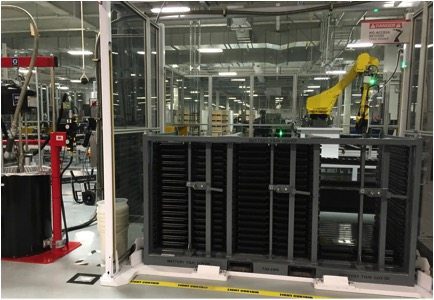BatPacC – all you need to know about making EV battery packs
Our last article on batteries was intended to draw attention to the cost differential between residential storage and electric vehicle storage. Residential storage costs around A$1700-$1900 per usable KWh (kilowatt hour) whereas EV storage costs less than $400/KWh of effective capacity.

What’s still left unanswered are the reasons for these differences. Still in this note we do no more than look at some of the components of the EV battery costs using the downloadable spread sheet from Argonne Labs Batpac C.
According to Argonne, this model was created in 2012 and represents the only “free” model of a lithium battery cost. The program costs out a factory including labour and other direct and indirect overheads, the costs of raw materials and other costs including depreciation and profit to derive EV battery pack costs.
In our view the results from the late 2015 update conform quite closely to what Tesla and GM are reporting in respect of the Model 3 and the Chevy Bolt. Particularly with Tesla having just offered tours of Stage 1 of its Reno Giga factory, it seems worthwhile reviewing battery pack costs. See this link Quarz’s tour of the Gigafactory for a uptodate review.

The first point to note is that the software only calculates costs up to the OEM [original equipment manufacturer] level. It doesn’t cost transport, installation, distribution, inverter or a bunch of other costs relevant to the stationary energy market.
Materials are the largest component of costs

Materials are 40% of cost. Direct and indirect labour are just 10% of cost, which is one reason why the Tesla factory can be built in Nevada, close enough to where the cars will be assembled. The US$214 total is higher than Tesla and GM but within the ball park. Depreciation is based on US$300 m of investment (for land & buildings about $100m, factory equipment of US$180 m and working capital).
US manufacturers might hope to get some State Govt. assistance with the land and even factory cost. In any event it’s a non cash cost once committed. Frankly, a number of the cost items below would be ignored by some companies in setting both price and measuring cost. R&D for instance might be regarded as sunk investment.

Despite the fact that nickel and cobalt are more expensive than some other materials, according to the authors of Batpac C, a variation in the chemistry won’t change the cost of the pack by more than 10%.

Batteries could certainly alter the price of commodities
If we just focus on EV battery demand only and put to one side for the moment the potentially larger still stationary energy market we can still see EVs eventually having a major impact on the demand for cobalt, nickel, lithium, and graphite. My calculations, not as reliable as those of Fermi to be sure, , are as follows

Argonne states for instance that there is 1.1 KG of graphite per KWh of EV battery capacity. So that is 66 Kg per EV, and for 0.5 m EVs per year that’s 33 m Kg. There is 1000 Kg per metric tonne and so 33 kt of graphite demand in that case. Graphite is sourced mainly from China at present, and can be naturally occurring or man made (from petroleum coke)
According to our estimates the current global demand for the key commodities for all purposes is:

However, note that we have not distinguished between the fully refined and semi refined commodity. There are various grades and alloys that give different answers of global demand. As stated nor have we considered wastage, or potential demand from stationary energy.
Although the demand supply and prices of commodities is important to share market the first point here is that provided the supply is actually available the battery maker is not that sensitive to the price of the commodity.
The second point though is that supply will need to expand, or different chemistries will have to be found, because EVs are to fully replace oil powered passenger vehicles.
David Leitch is principal of ITK. He was formerly a Utility Analyst for leading investment banks over the past 30 years. The views expressed are his own. Please note our new section, Energy Markets, which will include analysis from Leitch on the energy markets and broader energy issues. And also note our live generation widget, and the APVI solar contribution.









